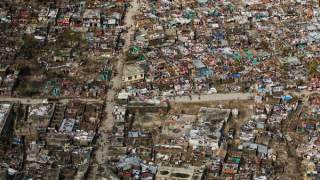Tracking inequalities in access to drinking water, sanitation and hygiene is essential for achieving universal access and ensuring progressive realisation of the human rights to water and sanitation.

Monitoring inequalities in access to basic services
The JMP has been drawing attention to inequalities in drinking water, sanitation and hygiene since 1990. The Millennium Development Goals target focused on halving the proportion of the population without access , but JMP updates have also highlighted inequalities between rural and urban areas, between rich and poor, and between other groups and the general population.
The Sustainable Development Goals (SDG) have a much stronger focus on inequalities, with Goal 10 dedicated to ‘reducing inequalities between and within countries’. The 2030 Agenda further commits Member States to ‘leave no one behind’ and states that SDG indicators should be disaggregated, where relevant, by income, sex, age, race, ethnicity, migratory status, disability, and geographic location.
The JMP continues to expand its inequalities database to reflect the new SDG ambition and works with partners to encourage further disaggregation in global, regional and national monitoring. Wherever possible JMP estimates are routinely disaggregated by the following characteristics:
- Urban and rural residence
- Wealth quintiles
- Sub-national regions
- Service levels ("JMP ladders")
In 2017, the JMP convened an expert taskforce on inequalities to consider what more can be done. The taskforce identified several priorities for expanded monitoring of inequalities during the SDGs including:
- Informal urban settlements
- Disadvantaged groups
- Affordability of WASH services
- Intra-household inequalities (such as gender, disabilities)
Monitoring inequalities in access to safely managed services
In many countries, data on safely managed services is only available at the national level or for certain population groups, such as households connected to formal networks. The integration of water quality testing into household surveys means that it is increasingly possible to disaggregate estimates for safely managed drinking water services by sub-national region and by wealth and other socio-eonomic characteristics of the population. But tracking inequalities in safely managed sanitation services is more challenging, as administrative data on desludging services and treatment of faecal sludge and wastewater are rarely disaggregated by population subgroups.
Further work is required to understand the relationship between inequalities in different elements of safely managed services so that these can be more systematically monitored in future reports.